Wasps are predatory or parasitic insects of the order Hymenoptera. There are over 1.3 lakh number of wasps all over the world. Amidst this huge number, certain wasps stand apart from the others in being extremely aggressive and large.
Here we will discuss 10 wasps from all over the world, which you should avoid if you come across them.
Top 10 Earth’s Strongest & Scariest Wasps
10) Cicada Killer Wasps

| Scientific name | Sphecius speciosus |
| Size | Approximately 2 Inches |
| Identification | Black body with yellow bands on mid-thorax and first three segments of Abdomen. The head and legs are orangish-red. Wings are spread straight when resting. |
Females of this wasp species possess stingers, whereas males don’t. These wasps are not very much aggressive although their sting can cause pain. They also look pretty scary due to their large size.
As the name suggests, these wasps mainly attack Cicadas, due to which some people also consider this wasp species as beneficial wasps.
Female wasps paralyze the cicadas by stinging them and then lay eggs inside the cicadas, which get devoured from the inside out by the growing larvae. A painful way to go down!
9) European Hornet
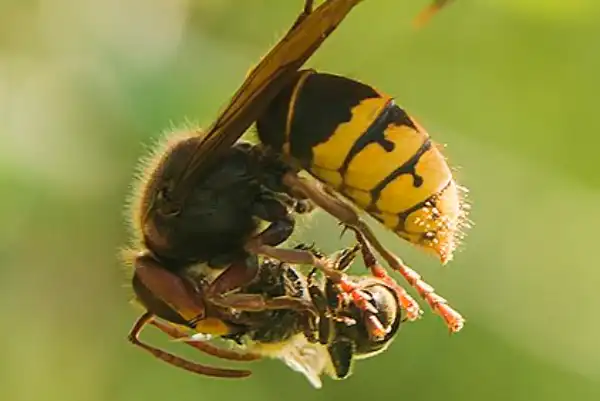
| Scientific Name | Vespa crabro |
| Size | Between 1 to 1.4 inches. |
| Identification | Their body is dark brown with the presence of yellow stripes. Wings are orangish-red. |
These wasps are oftentimes confused with the bees and their sting also feels a bit similar to a bee sting in pain. They are found in North America.
They can be aggressive if provoked and might sting without a warning, unlike the other wasp species. In general, they try to avoid any conflict.
8) Eastern Yellow Jackets
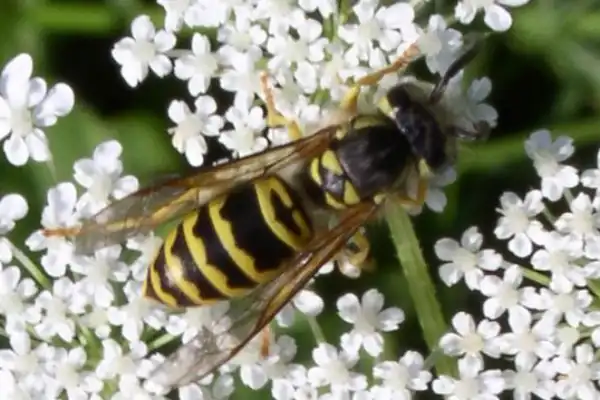
| Scientific name | Vespula maculifrons |
| Size | Between 0.5-0.62 inches |
| Identification | The head, thorax, and abdomen have alternating lines of black and yellow color. The abdomen becomes narrower at the thorax attachment. |
The Eastern yellow-jacket species has a rank of 2 in the Schmidt pain index. Generally, they are very aggressive and protect their nest from outside threats at all costs. They will sting repeatedly which oftentimes could become fatal.
They can be mostly found in various parts of Eastern North America. They are social insects that live inside a central nest.
7) Common Eastern Velvet Ant (females)
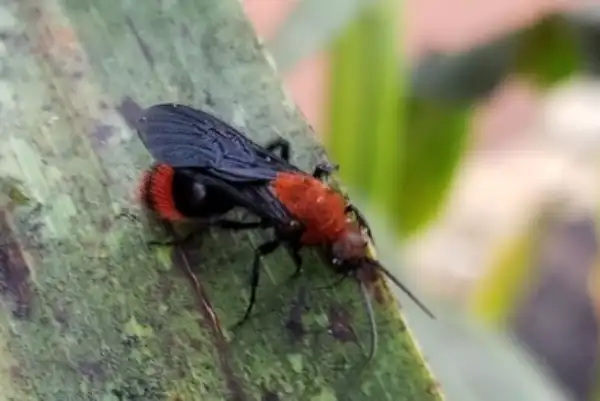
| Scientific Name | Dasymutilla occidentalis |
| Size | Around 0.75 inches. |
| Identification | Large, wingless wasps with black bodies. The head, thorax, and abdomen are covered with bright red-orange colored hairs. |
The female velvet ants are not true ants, instead they are wasps. Their appearance resembles that of a worker ant. The females are more aggressive than their male counterparts. They are native to the United States.
Unlike other wasps, these are solitary wasps and do not have their own nest. Instead, velvet wasps lay eggs inside other bee or wasp nests.
They are known by the famous name “Cow Killer” due to the excruciating pain their sting causes. It has a rank of 3 in the Schmidt Pain Index.
6) Red Paper Wasp
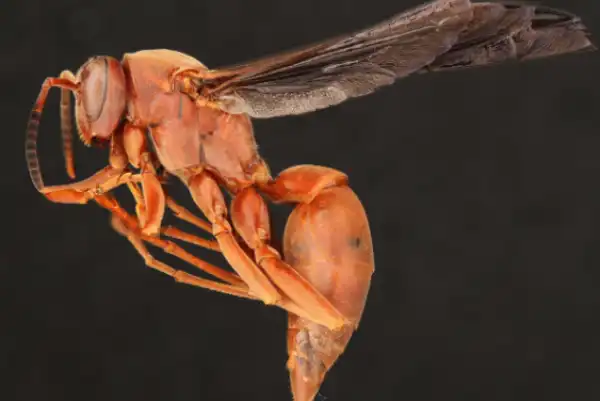
| Scientific name | Polistes Carolina |
| Size | Between 0.9 to 1.2 inches |
| Identification | Reddish-brown or rust-colored body with black wings. |
These wasp species rank 3rd in the Schmidt Pain Index. Do not get close to their nests, since they become very aggressive when they see larger predators. They usually attack in groups.
The red wasps have a name for creating one of the largest nests among the paper wasps. The size of the nests can increase to become that of a dinner table if left undisturbed.
5) Tarantula Hawk Wasp
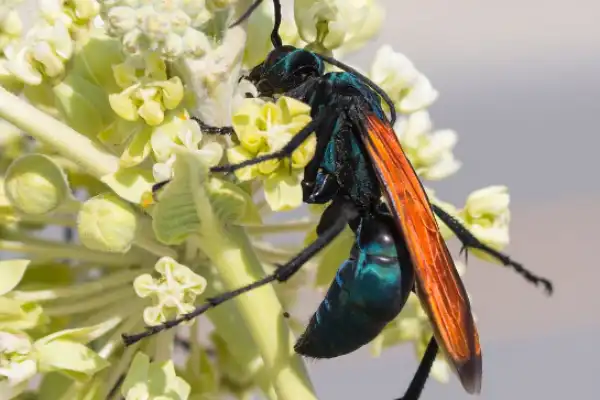
| Scientific Name | Pepsis grossa |
| Size | Can grow up to 2 inches. |
| Identification | Black Body with bright orange colored wings visible. |
I always thought nothing in this world could prey on spiders except spiders, but tarantula wasps or Spider Wasps changed my perspective. They primarily feed on tarantula spiders by paralyzing the spiders with their strong neurotoxin.
These wasps have a rank of 4 in the Schmidt pain Index. Schmidt himself compared the pain of the sting to that of an “electric shock”. However, their venom is not toxic.
4) Northern Warrior Wasp
| Scientific Name | Synoeca septentrionalis |
| Size | 0.8 inches on average. |
| Identification | Black or metallic body with large black wings. |
These wasps are very aggressive and can identify invading parasitic species based on how they enter their nests. These wasps have two specific holes-one for entrance and one for exit.
They are social insects and move in swarms from one nest to another. Generally, they are found in parts of Central and South America.
The sting of the warrior wasps is very painful and can last up to 2.5 hours.
3) Executioner Wasps
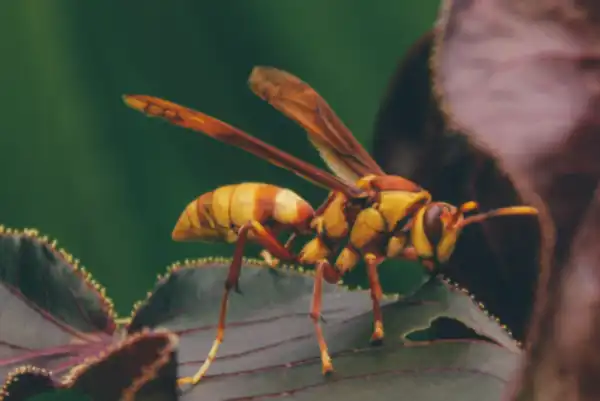
| Scientific Name | Polistes Carnifex |
| Size | Generally between 1 to 1.2 inches. |
| Identification | Large body with a mixture of yellow and brown colors. The wings are reddish-brown. |
These wasps are generally found in Mexico, Brazile, Paraguay, and sometimes in Texas. These wasps possess strong mandibles which they use to capture prey or build their nests.
They have a rank of 4 on the Schmidt Pain Index and they usually feed on caterpillars and plant nectars. Many people have said that the pain due to stinging by these wasps is almost comparable to that of a giant desert centipede
2) Bald Faced Hornets
https://in.pinterest.com/pin/101823641565968881/
| Scientific Name | Dolichovespula maculata |
| Size | 0.5 to 0.8 inches. Females are the largest. |
| Identification | Body color has a unique pattern of black and white. |
These wasp species are so aggressive in nature that they often get easily agitated by simple vibrations or sounds. They often chase their targets, no matter the size.
A unique fact about these wasps is that they have a good memory, due to which they can remember past invaders.
Their nests are also an engineering marvel and they are huge in size.
1) Asian Giant Hornet
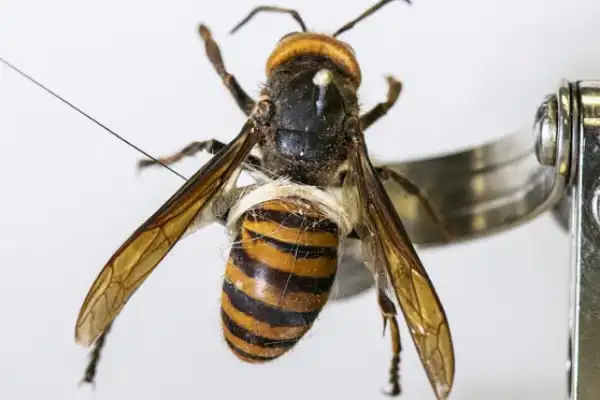
| Scientific Name | Vespa mandarinia |
| Size | Very large. around 1.5 to 2 inches. |
| Identification | The head is yellowish-orange. Thorax is black and the abdomen has a yellow and black stripe pattern. |
Known as “Murder hornets”, these are the most aggressive wasps, almost similar to the bald-faced hornets. They are formidable wasp species due to their large size and getting stung by them will be extremely painful, although they don’t literally “murder” any human.
These are meat-eaters and attack the honeybee population. They are also very strong.
Conclusion
The list presented here is based on general observations. The aggressiveness and stinging nature might vary between members of the same species. Since different people have different tolerance levels, pain perception might also be different from person to person.
Also Read:
Hi everyone. I am Sagnik. Biology has always fascinated me since my school days and that interest motivated me to pursue a Bachelor’s degree in Zoology and a Master’s degree in Biotechnology. I learned a lot of new interesting facts and information regarding the biological world we are part of. After obtaining my degree, I started working as a biology teacher through which I am able to teach students the various concepts that I have learned. Apart from my love for this subject, my passion lies in music, and I teach guitar as well. Photography, Reading comics, Drawing, and video editing are some of my other hobbies. I welcome you to a journey with me, where I will share my knowledge and excitement for the living world through my writings with you all.

